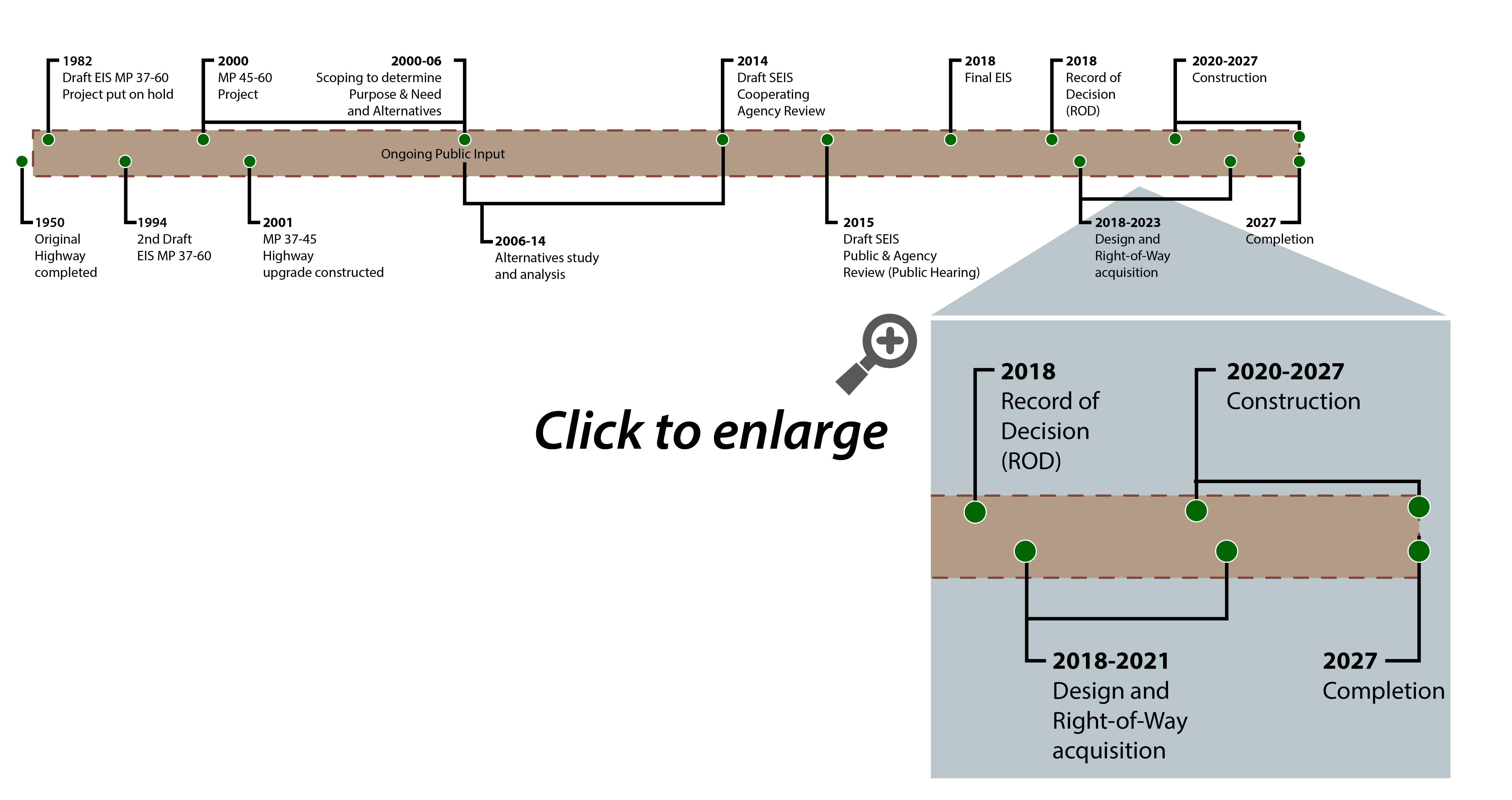Project Description
.jpg)
Download a "Print at Home" version.
Purpose and Need
There are three major needs that the Sterling Highway Milepost (MP) 45–60 Project addresses:
-
Need 1: Reduce Highway Congestion
-
Need 2: Meet Current Highway Design Standards
-
Need 3: Improve Highway Safety
The purpose of the project is to bring the highway up to current standards for a rural principal arterial to efficiently and safely serve through-traffic, local community traffic, and traffic bound for recreation destinations in the area, both now and in the future. In achieving this transportation purpose, the Alaska Department of Transportation and Public Facilities (DOT&PF) and the Federal Highway Administration (FHWA) recognize the importance of protecting the Kenai River corridor.
Project Benefits
The project will provide the following benefits:
- Increase safety for motorists and pedestrians.
- Improve access to local properties and recreation opportunities along the existing highway.
- Improve travel time through the area.
- Reduce the risk of fuel spills into the Kenai River by moving some traffic away from the river, meeting current standards.
- Reduce noise, dust, and traffic in Cooper Landing.
Juneau Creek Alternative
The selected alternative (the Juneau Creek Alternative) will construct about 10 miles of new alignment north of Cooper Landing and north of the Kenai River, between MP 46.5 and MP 56. This will include construction of a new bridge spanning Juneau Creek Canyon. Additionally, about 4 miles of the existing highway will be reconstructed on the existing alignment at the west and east ends of the project.
The Juneau Creek Alternative will cross the Resurrection Pass National Recreation Trail, and mitigation measures have been provided to lessen the effects of that crossing. Toward its west end, the new alignment will cross land currently in the Kenai National Wildlife Refuge and will rejoin the existing highway at about MP 56. The U.S. Fish and Wildlife Service traded designated wilderness with Cook Inlet Region, Inc., and then sold the necessary right-of-way for the Juneau Creek Alternative to DOT&PF. Mitigation is also provided for wildlife movement that includes four wildlife undercrossing structures and the first wildlife overpass of a highway in Alaska.
For an overview, watch this video from the Environmental Impact Statement (EIS) phase describing the Juneau Creek Alternative:
Information on the other alternatives evaluated can be accessed in the Draft EIS Meeting Materials.
History
In 1950, the gravel highway between Cooper Landing and Homer opened. It connected Homer and other western Kenai Peninsula communities to Anchorage and made them part of the road system. For many years, DOT&PF has recognized that the Sterling Highway needs improvement. DOT&PF initially proposed to improve the entire section of the Sterling Highway from MP 37 to 60. In the early 1980s and again in the 1990s, (as shown in the timeline below), DOT&PF initiated the National Environmental Policy Act (NEPA) process to determine the environmental impacts of proposed highway upgrades in an EIS. A number of alternative routes were identified in the 1982 and 1994 draft EISs but were later rejected for engineering, environmental, financial, and traffic constraint reasons. Eventually, the project was divided, and in 2001, DOT&PF completed upgrades of the MP 37 to 45 section. Consequently, the highway from MP 45 to 60 is the only portion of the highway that still has tight curves and no shoulders—relics of its original construction in 1950.
DOT&PF initiated an EIS for the highway between MP 45 and 60 in 2000, with the purpose of supplementing the 1994 Draft EIS for MP 37 to 60. Public and agency outreach and formal scoping meetings were held between July 2000 and July 2003. Those scoping activities are summarized in the Scoping Summary Report (October 2006). From 2006 through 2014, DOT&PF conducted extensive alternatives study and analysis. The Draft Supplemental Environmental Impact Statement (SEIS) and Draft Section 4(f) Evaluation were distributed for public review and comment in April and May 2015. In December 2015, DOT&PF and FHWA identified the G South Alternative as the preferred alternative. This announcement generated further comments. DOT&PF and FHWA re-examined the Draft SEIS and technical reports, and considered the issues raised in hundreds of public and agency comments on the Draft SEIS and in response to the announcement of the preferred alternative.
In 2018, DOT&PF and FHWA revised their determination and identified the Juneau Creek Alternative as the preferred alternative with release of the Final EIS. The Juneau Creek Alternative provides the best balance between meeting the project needs and minimizing impacts on the environment. FHWA signed a Record of Decision in May 2018 that selected the Juneau Creek Alternative. This is the final step in the EIS process and represents the final decision, selection of the alternative that will be advanced into final design.
